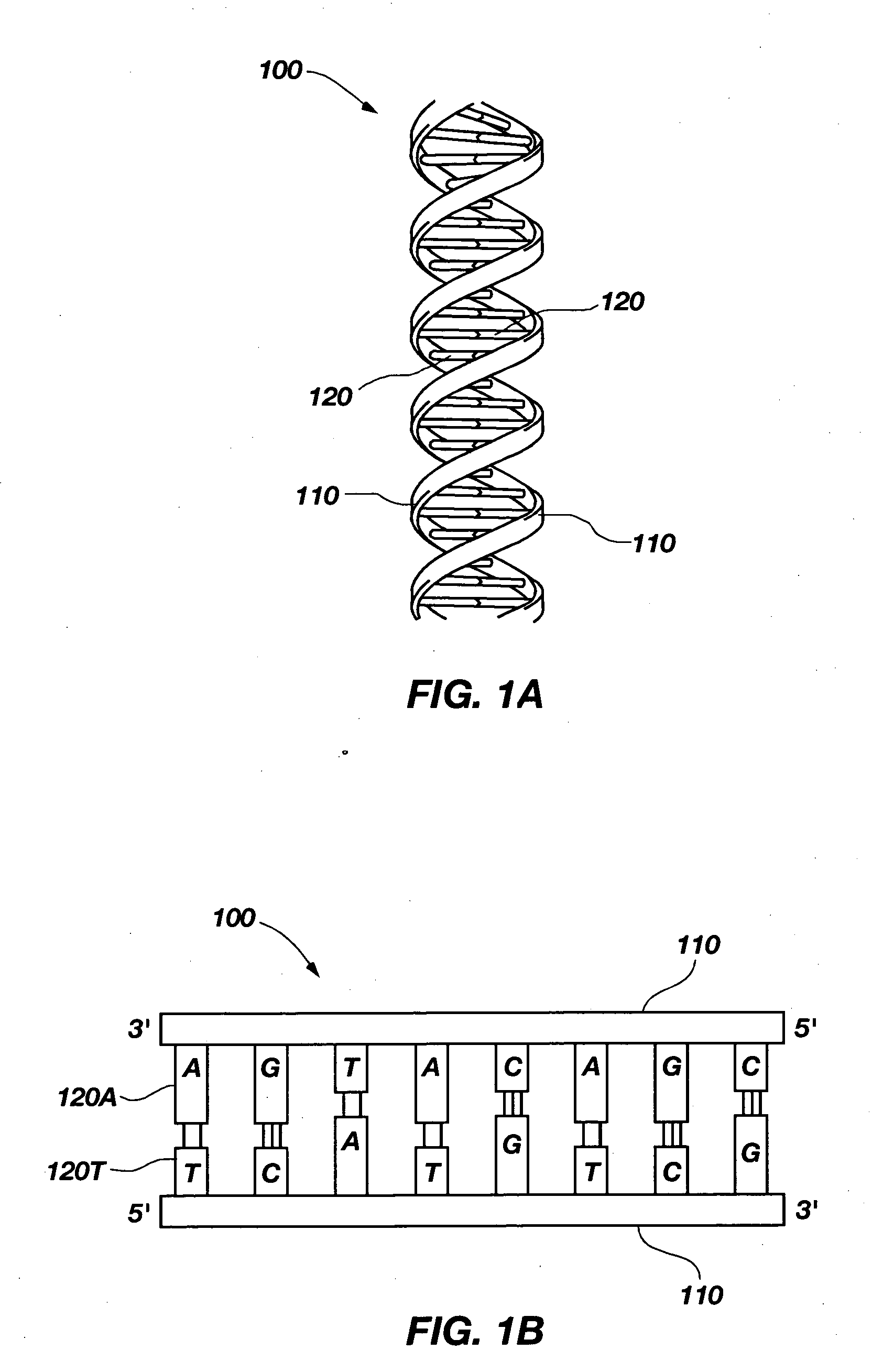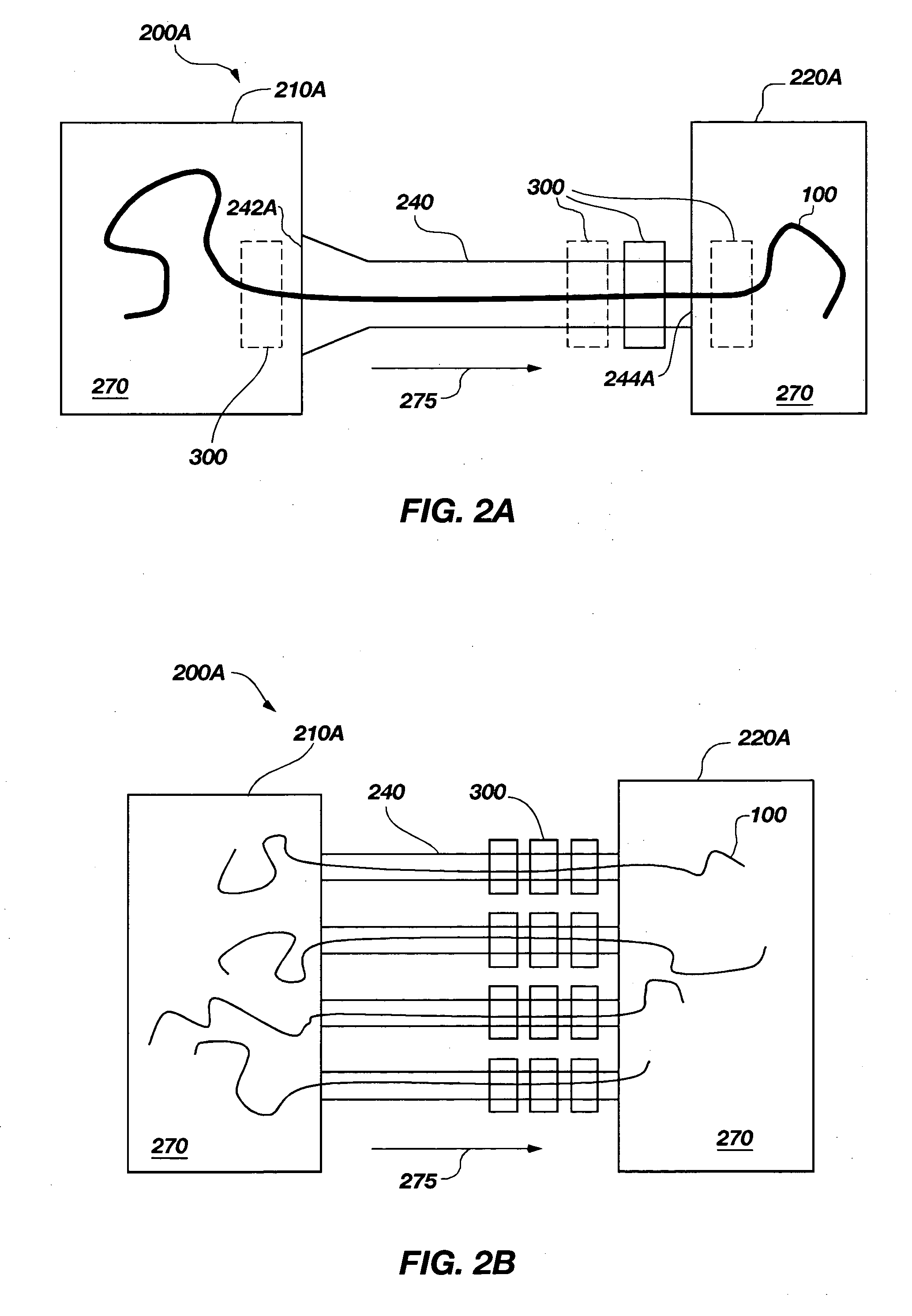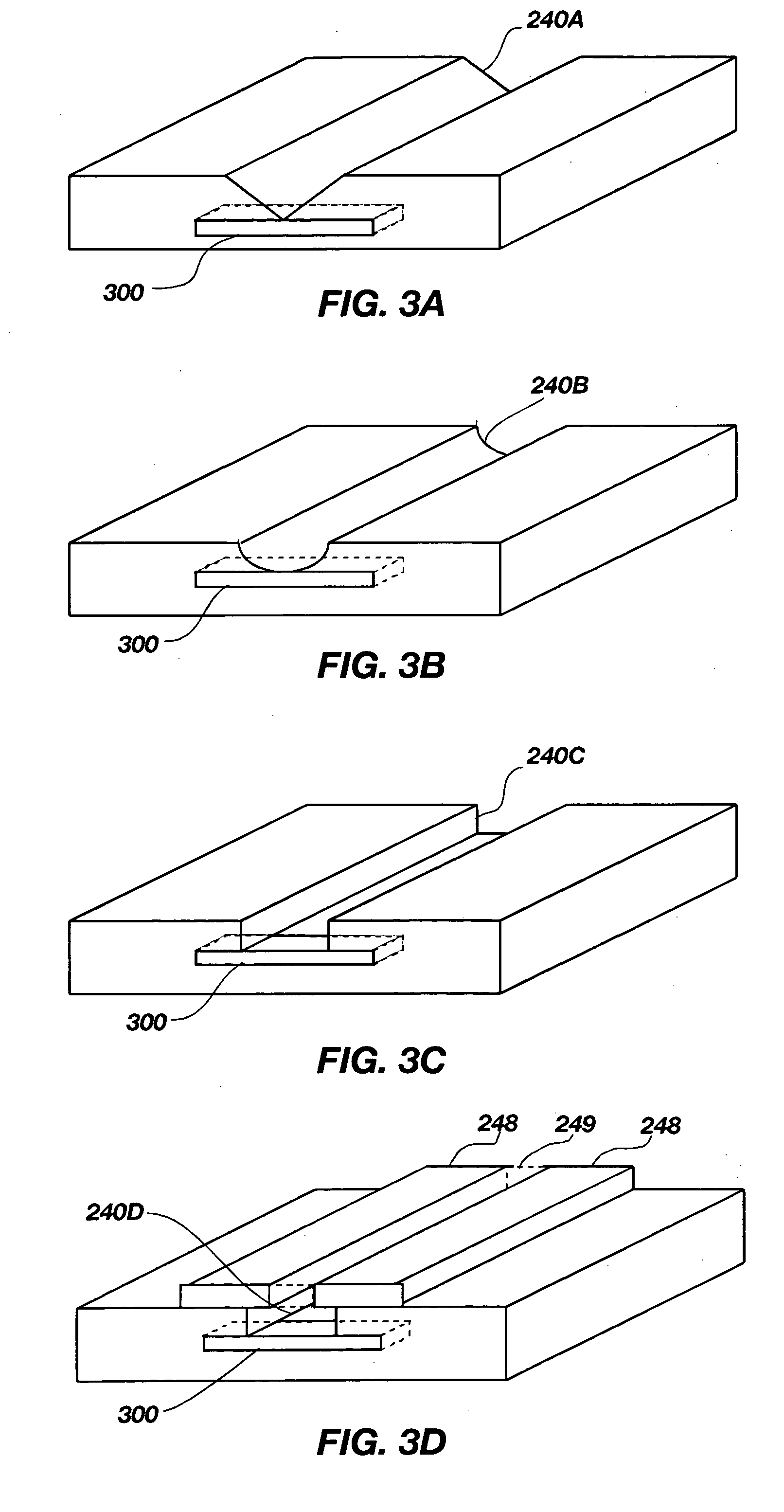Method and apparatus for moleclular analysis using nanostructure-enhanced Raman spectroscopy
a raman spectroscopy and nanostructure technology, applied in biochemistry apparatus and processes, laboratories, glassware, etc., can solve the problems of limited detection, difficult and expensive chemical process, and inconvenient use, and achieve the effect of improving detection efficiency and detection efficiency
- Summary
- Abstract
- Description
- Claims
- Application Information
AI Technical Summary
Benefits of technology
Problems solved by technology
Method used
Image
Examples
Embodiment Construction
[0028] The present invention, in a number of embodiments, includes structures, devices, and methods for use in detecting the molecular structure of biological polymers. As illustrated in FIGS. 1A and 1B, an example of one such biological polymer is Deoxyribonucleic acid (DNA). A DNA molecule 100 comprises a double helix structure including two backbone strands 110 on the outside of the double helix. The backbone strands 110 are a structure made up of sugar-phosphate polymer strands. Between the two backbone strands 110 are pairs of bases 120 configured similar to ladder rungs. The bases 120 connecting the strands consist of four types: adenine 120A (A), thymine 120T (T), guanine 120G (G), and cytosine 120C (C). RNA, which is closely related to DNA, comprises a similar structure including the A, G, and C bases of DNA. However, in RNA, rather than bonding with T, A bonds with the molecule uracil (U) (not shown), which is closely related to T. In addition, while RNA can form a double h...
PUM
| Property | Measurement | Unit |
|---|---|---|
| persistence length | aaaaa | aaaaa |
| persistence length | aaaaa | aaaaa |
| size | aaaaa | aaaaa |
Abstract
Description
Claims
Application Information
 Login to View More
Login to View More - R&D
- Intellectual Property
- Life Sciences
- Materials
- Tech Scout
- Unparalleled Data Quality
- Higher Quality Content
- 60% Fewer Hallucinations
Browse by: Latest US Patents, China's latest patents, Technical Efficacy Thesaurus, Application Domain, Technology Topic, Popular Technical Reports.
© 2025 PatSnap. All rights reserved.Legal|Privacy policy|Modern Slavery Act Transparency Statement|Sitemap|About US| Contact US: help@patsnap.com



